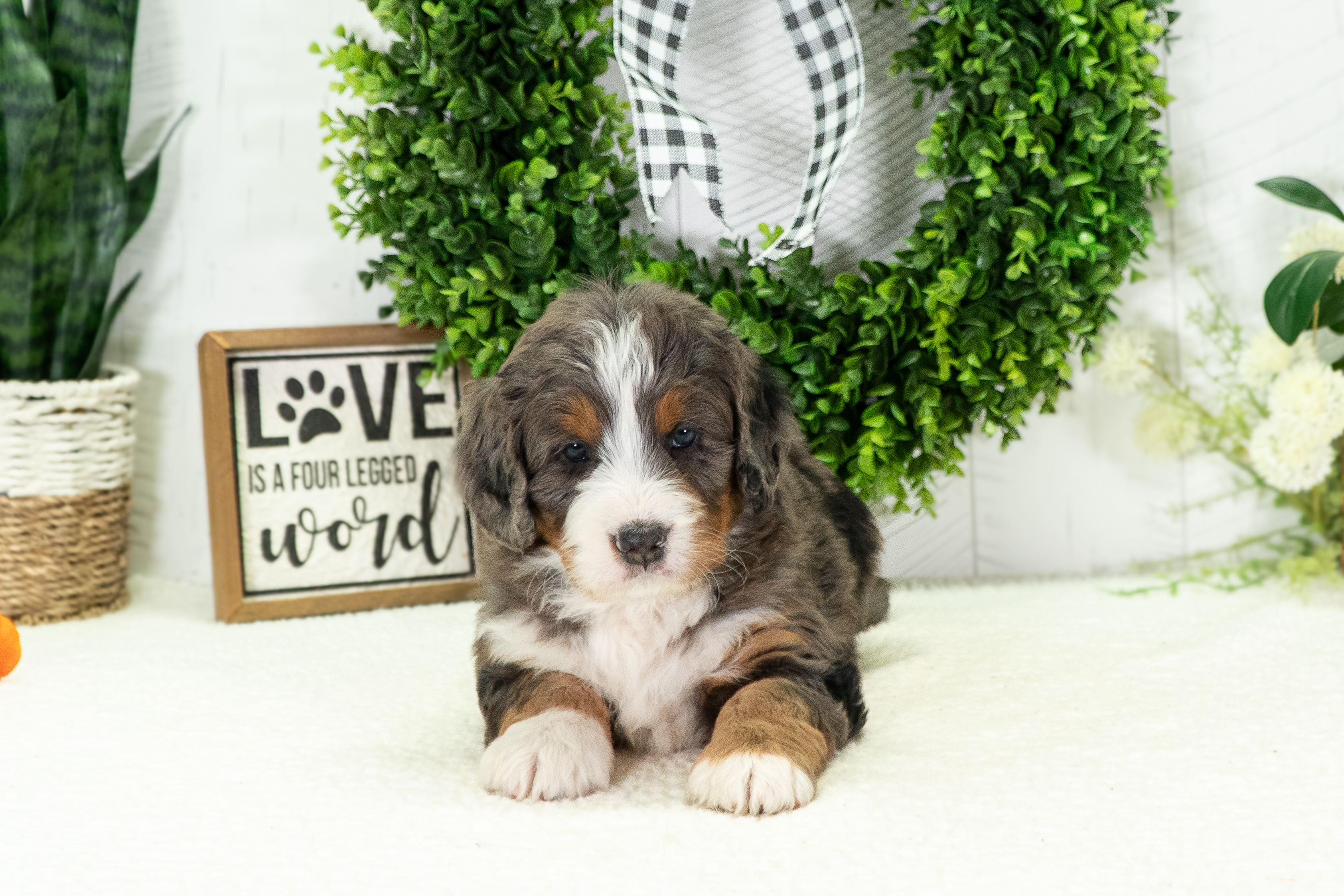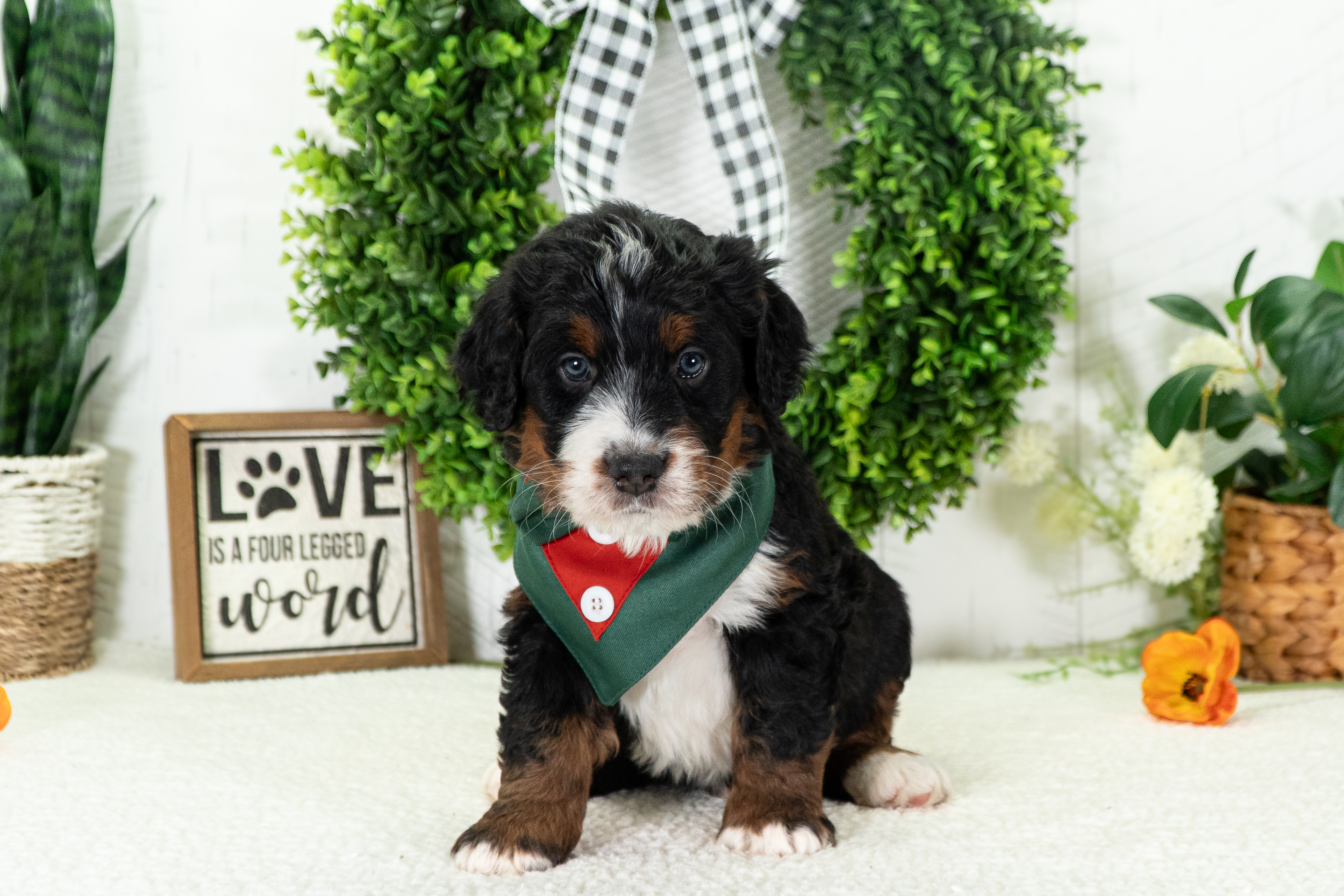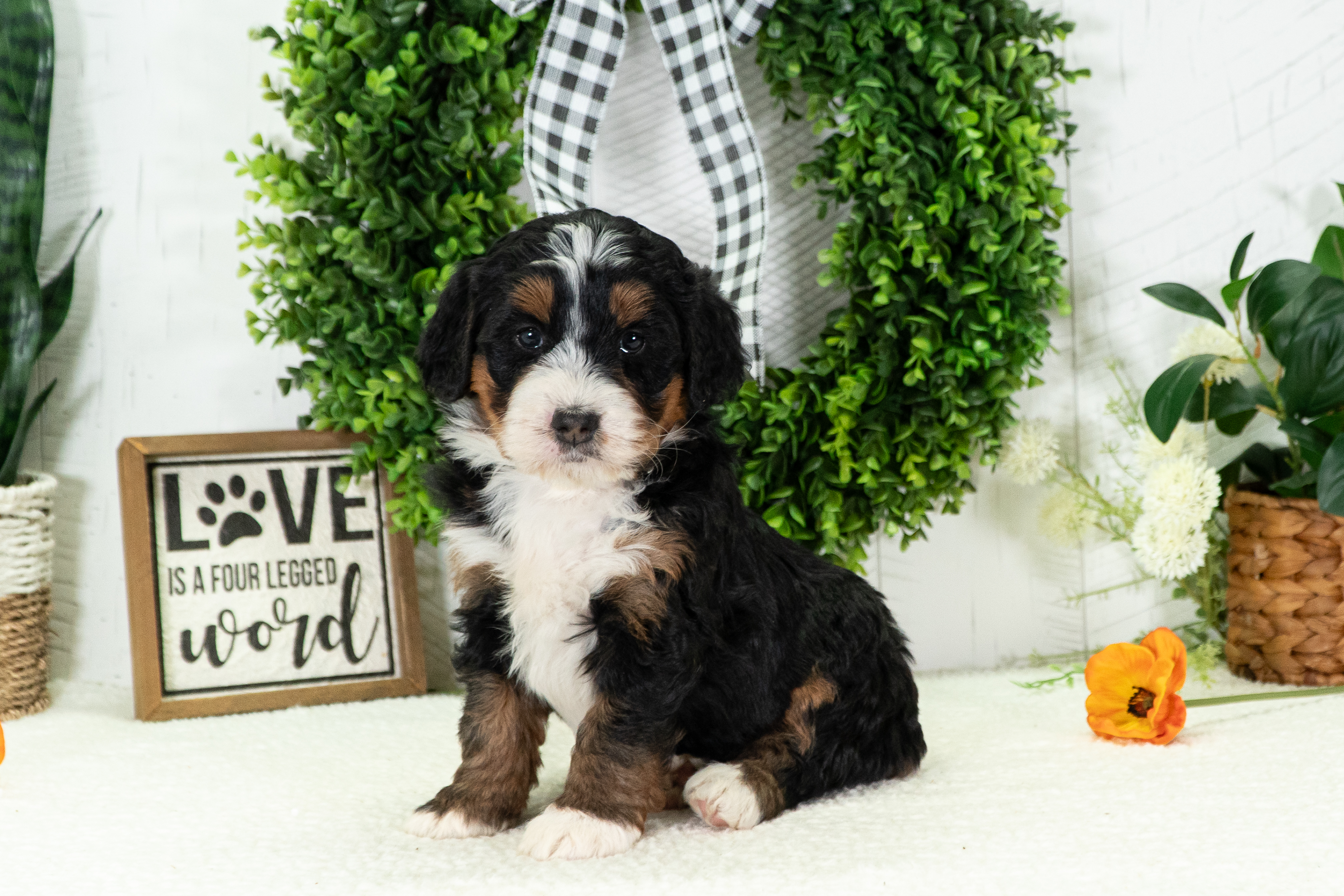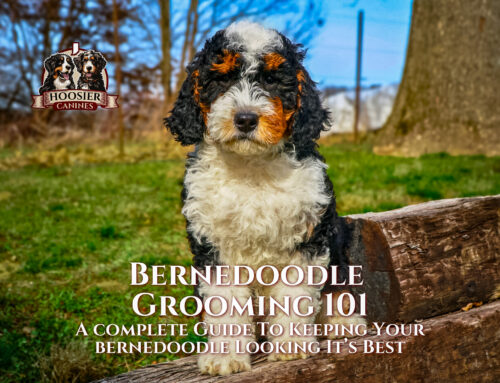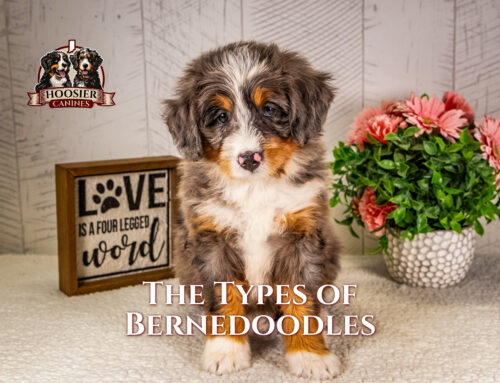Bernese Mountain Dog and Poodle: The Origins of the Bernedoodle
The Bernedoodle is more than a trendy, designer dog, it’s a hybrid of two very distinct breeds: the Bernese Mountain Dog and the Poodle. Known for their intelligence, loyalty, and hypoallergenic coats, Bernedoodles have quickly become one of the most sought-after family dogs in the United States. But to truly appreciate what makes them so special, it helps to understand the rich lineage they come from. Both the Bernese and the Poodle have fascinating, centuries-old histories, each with unique traits, roles, and temperaments that influence the modern Bernedoodle.
If you’re considering adding a Bernedoodle to your home, learning about the origins of their parent breeds offers valuable insight. Let’s take a deeper look at the histories, defining characteristics, and enduring appeal of the Bernese Mountain Dog and the Poodle.
Bernese, The Loyal Swiss Companion
Historical Background
The Bernese Mountain Dog, affectionately known as the “Berner,” hails from the heart of Switzerland, specifically the Canton of Bern. Bred to endure the rugged conditions of the Swiss Alps, these dogs were an integral part of rural farm life for centuries. They belong to a group of four Swiss mountain dog breeds known as the Sennenhunds, but the Bernese is the only one with a long, silky coat.
Historically referred to as “Berner Sennenhund,” these dogs were trusted all-purpose farmhands. They herded cattle, protected livestock from predators, and even pulled carts loaded with milk, cheese, and farm goods to and from markets, a job that earned them the nickname “cheese dogs.” Their calm disposition and impressive work ethic made them a beloved presence in Switzerland’s mountainous farming communities.
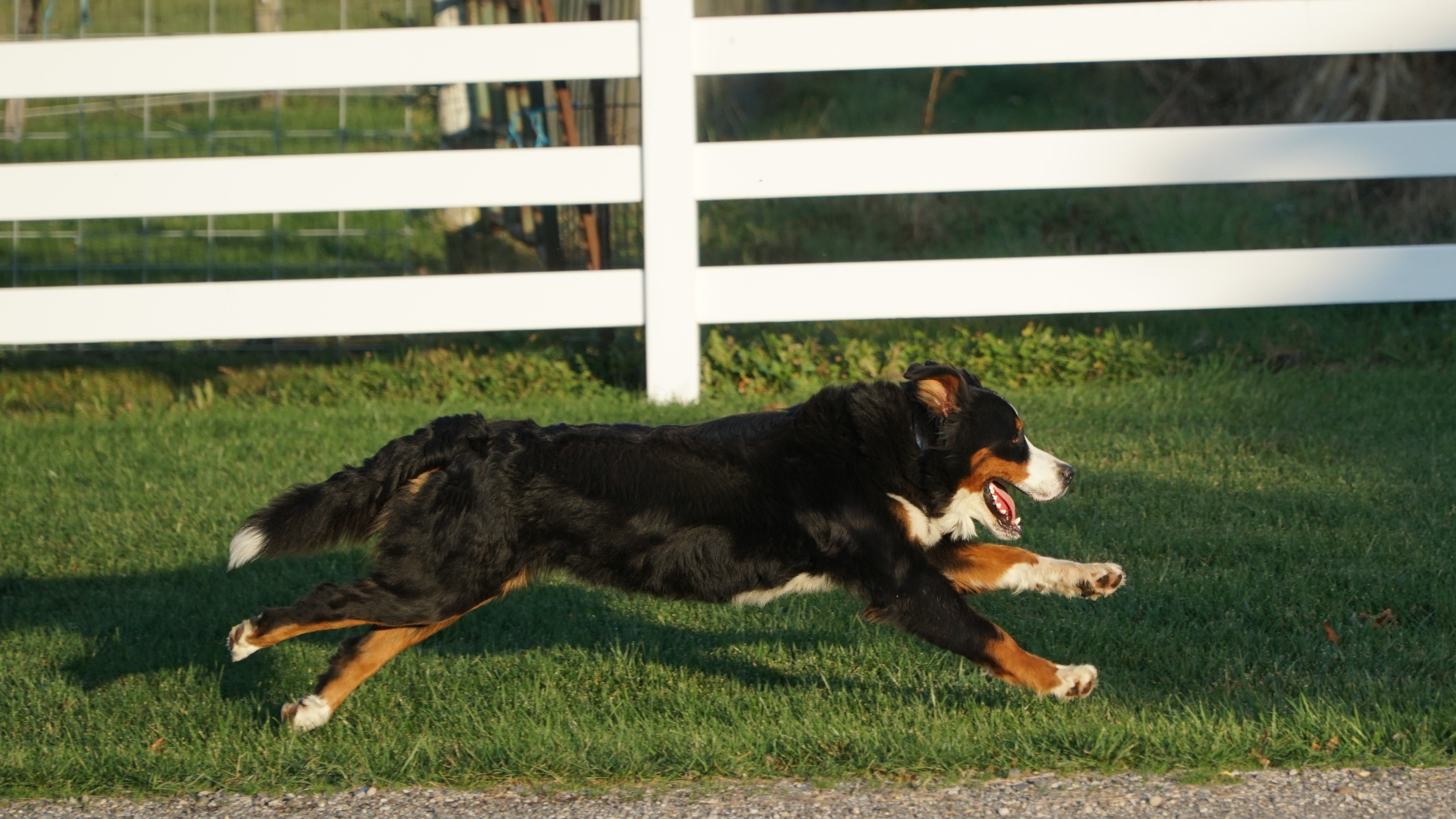

Development and Recognition
The breed’s development was influenced by Roman mastiff-type dogs that were brought through the Alps nearly 2,000 years ago. These dogs eventually mixed with local farm dogs, creating a strong, durable breed adapted to the climate and lifestyle of the region. Despite their usefulness, by the late 1800s, Bernese Mountain Dogs were in decline due to shifts in farming practices.
Thanks to breed enthusiasts like Professor Albert Heim, efforts were made to preserve and promote the breed in the early 20th century. Heim helped to standardize their appearance and revive interest. The breed was brought to the United States in the 1920s and received official recognition by the American Kennel Club (AKC) in 1937. Since then, their popularity has continued to grow, especially among families drawn to their affectionate nature and majestic looks.
Bernese Mountain Dog Traits and Temperament
Bernese Mountain Dogs are large, powerful, yet gentle-natured dogs, typically weighing between 70 to 115 pounds and standing 23 to 27.5 inches tall. Their luxurious, tricolor coats, jet black with rust and white markings, make them stand out, and their expressive, dark brown eyes reveal a kind and intelligent soul.
Bred to work closely with humans, Berners are known for their loyal, loving temperament. They are naturally gentle and patient, making them excellent companions for children. Their calm demeanor means they rarely act aggressively, and their alertness makes them excellent watchdogs, though they’re more likely to greet visitors with curiosity than suspicion. Berners tend to form strong bonds with their families and can be sensitive to harsh training, so they respond best to positive reinforcement and consistency.
While they are typically calm indoors, they thrive when given tasks, outdoor time, and physical activity. Hiking, cart-pulling, and obedience training are great ways to keep a Berner mentally and physically engaged.

Health Considerations
Like many large breeds, Bernese Mountain Dogs have a shorter lifespan, typically averaging 7 to 10 years. They are genetically predisposed to several health conditions, most notably:
- Hip and Elbow Dysplasia: These joint issues can cause discomfort and limit mobility if not managed early.
- Histiocytic Sarcoma: A particularly aggressive form of cancer that unfortunately affects the breed at a higher-than-average rate.
- Progressive Retinal Atrophy (PRA): A degenerative eye condition that can lead to blindness.
- Bloat (Gastric Torsion): A potentially life-threatening condition common in deep-chested breeds.
Due to these risks, responsible breeding and health screening are essential. Reputable breeders will perform orthopedic evaluations, cardiac exams, and genetic testing to help minimize inherited issues. Regular veterinary care, proper diet, and moderate exercise are also key to extending a Berner’s health and quality of life.
Despite these concerns, many Berners live fulfilling, happy lives and provide years of companionship, loyalty, and love to the families they join. Their affectionate nature and dignified presence make them unforgettable pets for those prepared to meet their needs.
Available Puppies
Featured Puppies
The Poodle’s Intelligence and Versatility
Historical Background
Though widely associated with France due to its cultural prominence there, the Poodle actually originated in Germany. The name “Pudel” is derived from the German word “pudeln,” meaning “to splash,” a reference to the breed’s original purpose as a water retriever. These early Poodles were bred for retrieving ducks and other game from water, and their strong swimming ability, intelligence, and agility made them ideal hunting companions.
The signature Poodle clip, often seen as decorative today, actually served a practical purpose. Hunters shaved portions of the dog’s body to reduce drag in the water, while leaving tufts of hair to protect vital joints and organs from cold temperatures. Over time, the breed’s practical abilities and distinct appearance helped it stand out across Europe.
Development and Recognition
As Poodles made their way into France and other parts of Europe, they gained attention not only for their usefulness in the field but also for their elegant appearance and charm. They quickly became favored by nobility and aristocrats, especially during the 17th and 18th centuries. Miniature and Toy Poodles were developed through selective breeding to serve as companions for the wealthy, particularly among French and Spanish courts.
Poodles were officially recognized by the American Kennel Club (AKC) in 1887 and have remained one of the most popular dog breeds in the U.S. ever since. Their presence in dog shows, agility trials, and even therapy work reflects their versatility and intelligence. Today, Poodles are admired not only for their distinctive coats but also for their remarkable trainability and eager-to-please nature.
The Traits and Temperament of a Poodle
Poodles are known for being one of the most intelligent dog breeds in the world. Their keen instincts, fast learning ability, and desire to engage with their humans make them ideal for both first-time and experienced dog owners. Whether performing in competitions or snuggling on the couch, Poodles adapt well to a wide variety of environments and lifestyles.
In addition to their intelligence, Poodles are affectionate, alert, and often comical. They are quick to bond with their families and thrive on interaction and mental stimulation. While highly trainable, Poodles do require consistent engagement to prevent boredom, which can lead to undesirable behaviors. Their innate desire to work and be active companions makes them excellent choices for obedience, agility, service dog training, and more.
Their coat, which is dense and curly, is considered hypoallergenic because it traps dander rather than spreading it, making them more suitable for allergy sufferers. However, it requires regular grooming to avoid matting and to keep the coat in optimal condition.
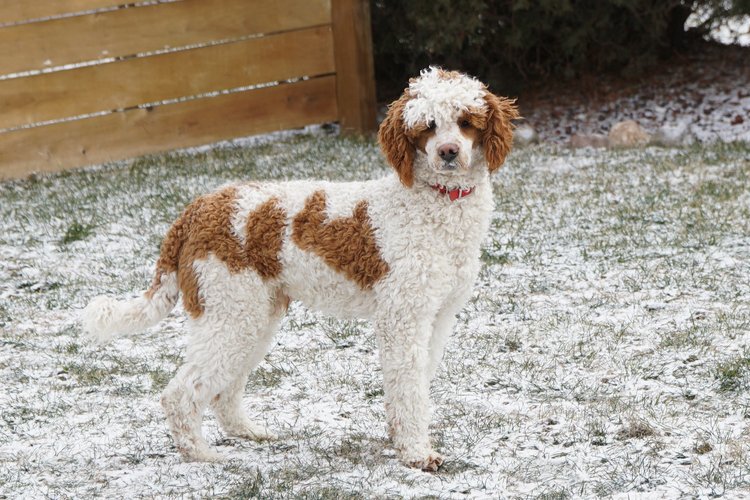
Types of Poodles
- Standard Poodle: The largest of the breed, standing over 15 inches tall and typically weighing between 45 to 75 pounds. Standard Poodles are often calm, dignified, and well-suited for active families or individuals.
- Miniature Poodle: Measuring between 10 to 15 inches and weighing around 15 to 18 pounds, Miniature Poodles retain the intelligence and charm of their larger counterparts but are more adaptable to smaller living spaces.
- Toy Poodle: The smallest of the three, standing under 10 inches tall and weighing 4 to 6 pounds. Toy Poodles are lively, loving lap dogs, ideal for those in apartments or looking for a portable companion.
While each type shares the same general temperament and coat characteristics, their energy levels and exercise needs can vary. Standard Poodles typically require more physical exercise, while Miniature and Toy Poodles benefit from mentally engaging activities and short play sessions throughout the day.
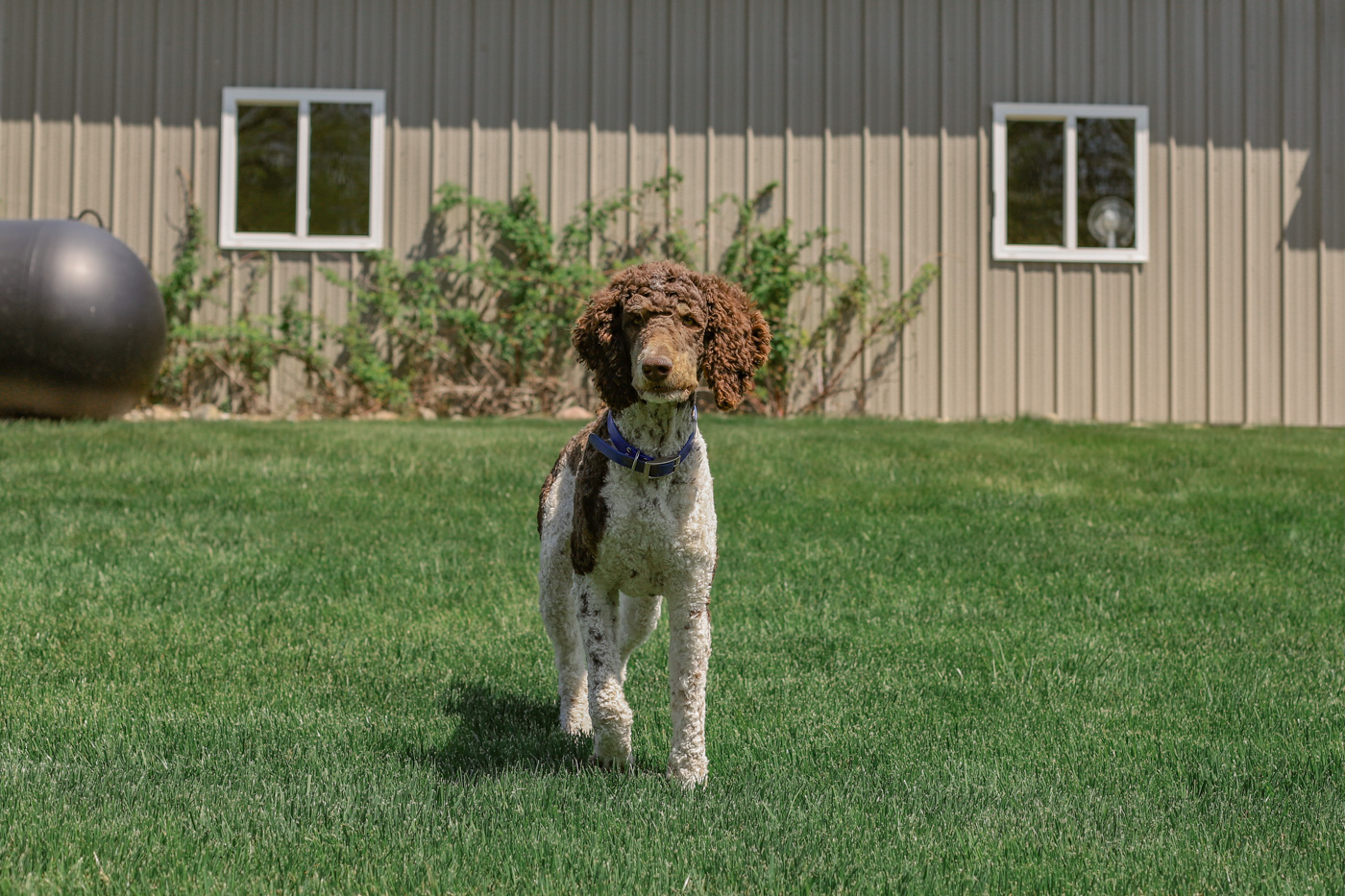
Health Considerations
Poodles are generally a healthy breed but, like all dogs, they are susceptible to certain hereditary health conditions. The most common issues seen across the breed include:
- Progressive Retinal Atrophy (PRA): A group of degenerative diseases that affect the retina and can lead to blindness.
- Hip Dysplasia: A malformation of the hip joint that can cause pain and mobility issues, especially in Standard Poodles.
- Addison’s Disease: A serious condition caused by insufficient production of adrenal hormones.
- Epilepsy: Seizure disorders can occur in all sizes of Poodles and may require lifelong management.
- Patellar Luxation: Especially in Toy and Miniature Poodles, this condition affects the kneecap, leading to mobility challenges.
To reduce the risk of these conditions, responsible breeders perform thorough genetic testing, OFA evaluations, and provide full health histories for their breeding dogs. With proper care, Poodles can live long and vibrant lives, typically 12 to 15 years or more. Regular exercise, a balanced diet, and routine veterinary visits are essential to keeping them healthy and happy. Responsible breeders conduct extensive genetic tests and health screenings to minimize these risks, resulting in healthier, happier dogs.
Combining Breeds: The First Bernedoodles
We know what your thinking. With the quality of Bernedoodles we breed, Hoosier Canines must be the first, right?! Wishful thinking, we’ve only been been doing this for a decade. The Bernedoodle emerged from a purposeful effort to create a companion dog that combined the best qualities of two very different yet complementary breeds, the Bernese Mountain Dog and the Poodle. The idea was to preserve the loyal, affectionate, and gentle temperament of the Bernese while incorporating the intelligence, low-shedding coat, and trainability of the Poodle. This hybrid would not only be family-friendly and beautiful but also more allergy-friendly and versatile than its purebred counterparts.
Sherry Rupke of Swissridge Kennels in Ontario, Canada, is widely credited as the first breeder to intentionally cross a Bernese Mountain Dog with a Poodle in the early 2000’s, around 2003. Her goal was to address some of the health concerns common in Bernese Mountain Dogs while making the breed more accessible to families who needed a dog with reduced shedding or allergenic properties. Since then, the Bernedoodle has grown in popularity across North America and internationally, celebrated for its combination of smarts, sweetness, and striking looks!
Responsible Breeding Practices
As the popularity of Bernedoodles has grown, so has the need for ethical, responsible breeding. Producing healthy, well-tempered Bernedoodles requires more than just mixing two breeds. Reputable breeders are deeply committed to:
- Genetic Testing: Both the Bernese and Poodle lines should be tested for breed-specific genetic conditions, including PRA, and certain cancers, to ensure healthy offspring.
- Health Screenings: OFA certifications for hips, elbows, knees, and cardiac health help ensure the breeding dogs are physically sound.
- Temperament Evaluation: Only dogs with stable, friendly, and trainable temperaments should be included in a breeding program.
- Puppy Socialization: Reputable breeders begin early socialization, exposing puppies to various sounds, surfaces, people, and gentle handling to build confidence and adaptability.
- Ethical Practices: Limiting the number of litters per dam, providing proper care between breeding’s, and raising puppies in clean environments are key signs of ethical breeders.
With these best practices in place, the result is a Bernedoodle that’s not only beautiful and fun to be around but also emotionally well-adjusted and physically sound, sorta like the Hoosier Canines Bernedoodle!
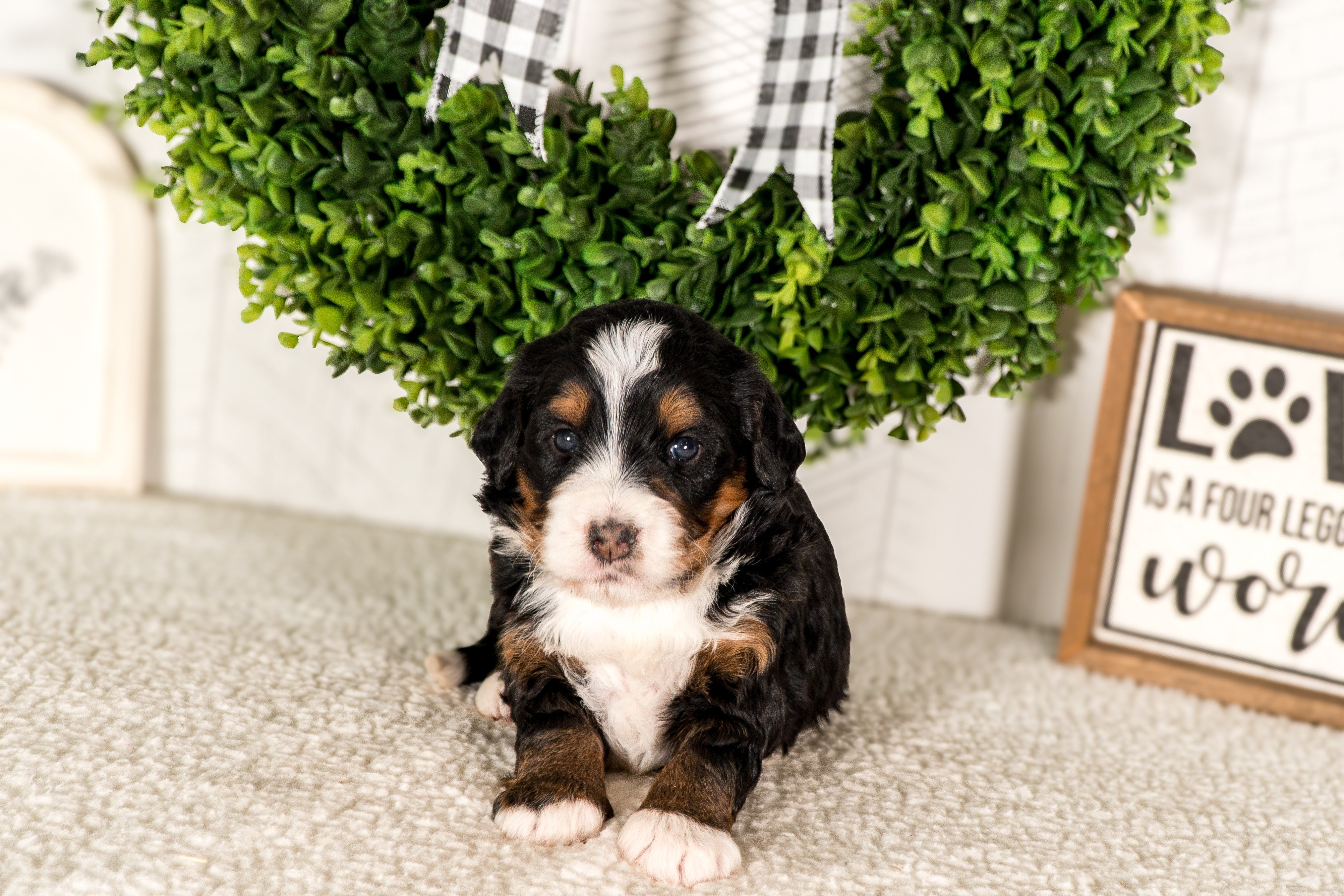
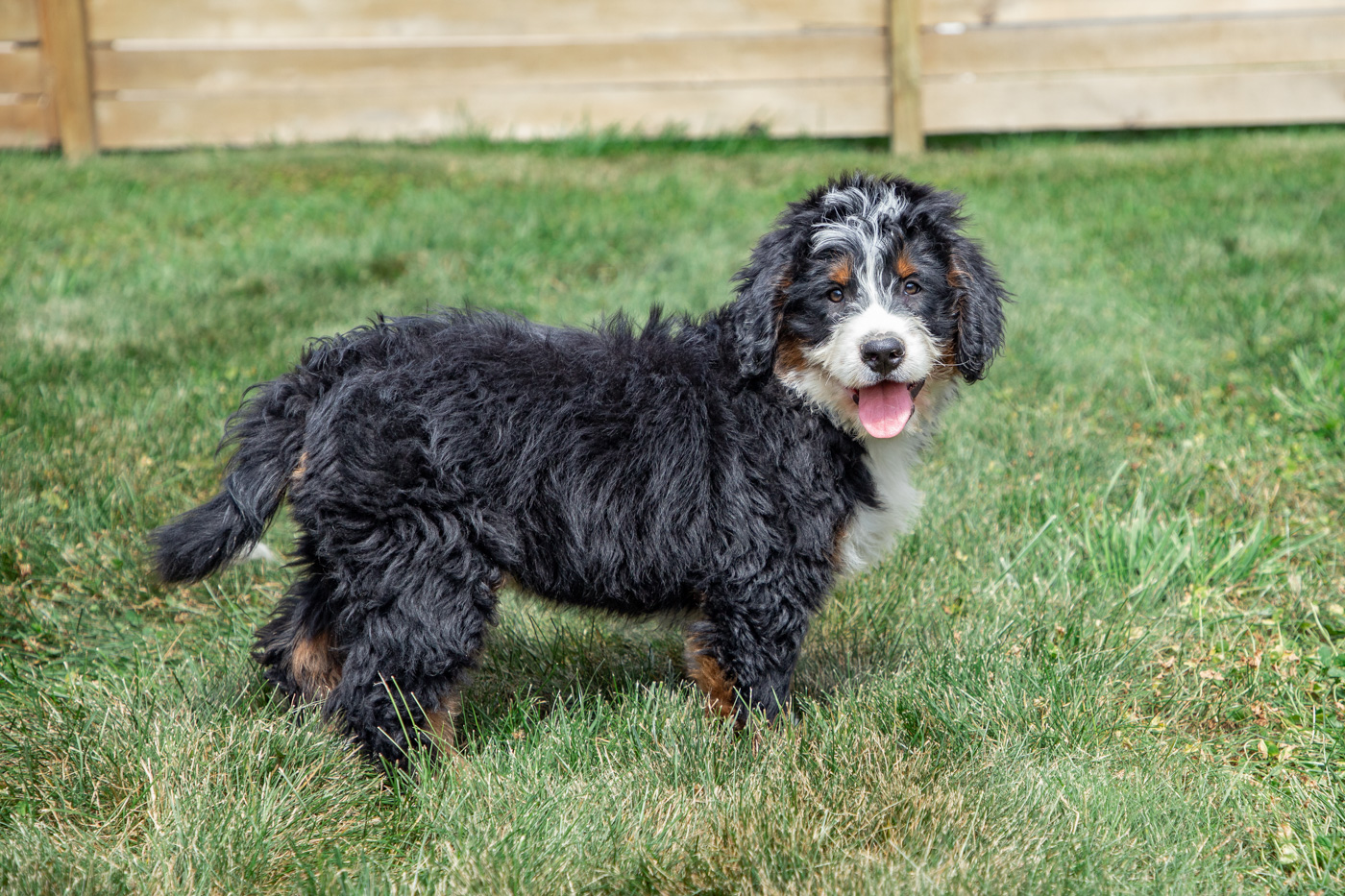
Final Thoughts
Understanding the rich histories and characteristics of the Bernese Mountain Dog and the Poodle illuminates why Bernedoodles are adored by many. Whether you’re fascinated by their historical roles, captivated by their distinct traits, or seeking a loyal and intelligent family companion, knowing these breeds’ backgrounds ensures you appreciate your Bernedoodle even more deeply. Always choose a reputable breeder committed to health, temperament, and ethical practices, ensuring your companion is both happy and healthy for years to come.


